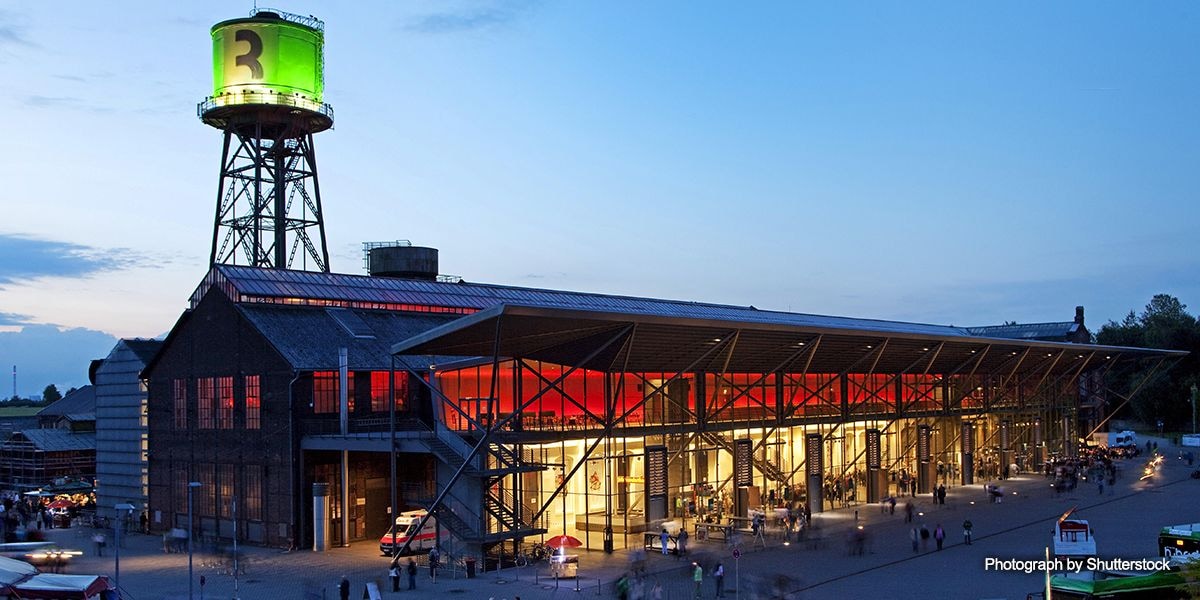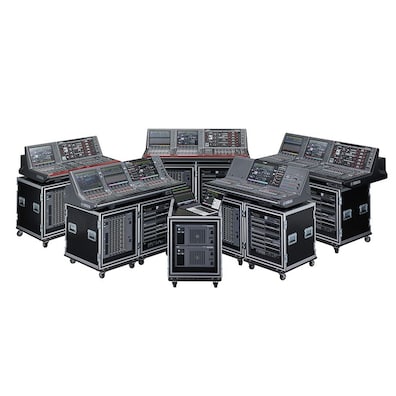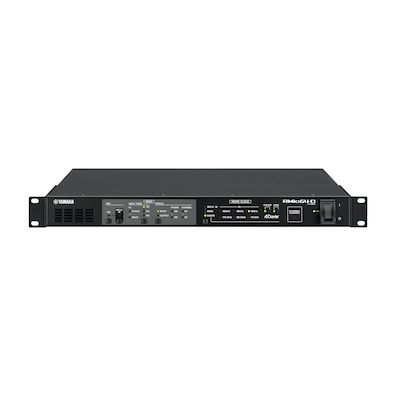Ruhrtriennale 2021 Begins With Surrealist Opera Bählamms Fest… and Yamaha RIVAGE PM10

Jahrhunderthalle Bochum
Founded in 2012, Ruhrtriennale is a three-yearly cycle of music and arts events, which take place from August to October in Germany’s industrial Ruhr region. The prestige of staging this year’s opening production fell to Ensemble Modern, a renowned global collective of soloists, whose sound designer Norbert Ommer chose a Yamaha RIVAGE PM10 digital mixing system for the surrealist, unconventional opera Bählamms Fest.
Ruhrtriennale is a unique festival which embraces a wide range of performances, all taking place in venues created within the region’s industrial architecture. A new artistic director is appointed for each cycle. For 2021-2023 it is renowned German theatre producer and director Barbara Frey. To open the 2021 programme, Barbara chose the premiere of Bählamms Fest, a production which blurs the lines between reality and virtuality, based on the Leonora Carrington play The Feast of the Lambs.
Norbert Ommer has worked with Ensemble Modern for many years and had to design an audio system for the performances in Jahrhunderthalle Bochum, a former power station at the city’s Krupp steelworks. With staging that created a rural scene, complete with a pond and falling snow, Norbert’s sound design brought the sound production right into the audience.
“The challenge of Jahrhunderthalle is to transform an industrial hall into a concert hall. As only minor acoustic measures are possible - the visual character of the hall has to be preserved - I was completely dependent on using electroacoustic means,” says Norbert. “But this limitation also offers a great opportunity, if you know how to use it.”
Previously, Norbert was one of the first sound engineers to use the Yamaha PM1D digital mixing console for classical productions with high input/output counts. Before that he was, as he says “an enthusiastic user of the Yamaha PM3500 console in the analogue world!”
“This production of Bählamms Fest was not a traditional opera. An essential part of the composition was multiple sound feeds and communicating feelings of alienation,” he continues. “We used software from the Institute for Research and Coordination in Acoustics/Music (IRCAM) to morph the sounds of the singers. Running on four Macintosh laptops, the voices were analysed to find the fundamental frequency, or pitch. The computer then played a pre-recorded sound based on the pitch it detected.
“In addition, the orchestra did not sit in an orchestra pit, but on a part of the staging area facing away from the audience.”
Norbert’s sound design was crucial for not only turning Jahrhunderthalle into the acoustic equivalent of an opera house, but for making sure the sound of the orchestra filled the entire auditorium and, as he says, “enveloped the singing voices”.
He designed a system with 124 microphone inputs, mixed on the Yamaha RIVAGE PM10 with RMio64-D Dante/MADI conversion I/O rack, routed to 44 outputs, including 12 channels of Ambisonics surround sound.

Norbert Ommer
“The basic idea of the sound design was on the L-C-R principle, but I used different arrangements of L-C-R, each representing different sound sources and arranged according to the law of the first wavefront, or Haas effect,” says Norbert. “In addition, the design also used ‘effect systems’ on the stage to expand its sound space, so to speak, while the audience was additionally surrounded by 16 sources to create a multichannel spatiality in the auditorium.”
Norbert chose RIVAGE PM10 primarily because he needed a fast, very reliable system with a high channel count.
“I needed a mixing system that offered me great clarity and sound quality, many inputs and outputs and, above all, straightforward operation,” he says. “Because I work alone and I read the score as I am mixing the performance, I needed very quick access to all parameters. RIVAGE PM10 also offered the highest operational reliability - I had to be able to rely completely on my ‘instrument’!”
He continues, “I really like the preamps, which can be controlled very finely - this is very important for opera singers with their high dynamic range. It also has great-sounding filters, which do not colour the sound when used with classical instruments and voices. The efficient compressor/limiter circuits and high quality reverbs are also very important for opera productions.”
The three performances of Bählamms Fest were a suitably impressive opening to the 2021 Ruhrtriennale programme, highlighting the diversity of production that this inclusive arts festival embraces.
“The production was a complete success. Many reviews spoke about the very high quality of the sound and the clarity of the voices,” says Norbert. “The Ensemble Modern and conductor Sylvain Cambreling were also amazed by both the beauty of the sound and the always perfect performance of the system.”
Bählamms Fest audio team:
Norbert Ommer: Sound design and front of house engineer
Jose Miguel Fernandez: Live electronic (sound morphing)
Jens Schilling: System engineer
Daniel Przemus: Orchestra technician
Ian Weinfurtner: Wireless microphones technician
Manuel Poletti: Live electronics design
Stefan Holzt: Ruhrtriennale sound supervisor
Markus Noisternig: IRCAM sound supervisor
Information
Location
Germany


